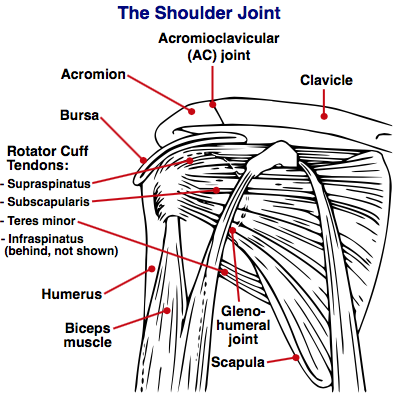Having been around sports my entire life, sports-related stories for the most part usually catch my eye. That occurred today when I came across a new study focusing on a method to improve shoulder flexibility among pitchers.
With the baseball season quickly approaching not only was it timely, the subject also held some intrigue. Besides, I had never once heard of the Spencer technique so I thought I'd give the study some attention. But it has left me more skeptic than fan.
The study, published this month in The Journal of the American Osteopathic Association, concluded that "a single administration of the technique immediately restored internal rotation of the players' shoulder," according to a statement announcing the research and its conclusions. That's an interesting claim, and with a pitcher's shoulder being one of the most susceptible areas to a baseball-related injury, I read on.
What I learned was that the study involved just 15 pitchers, all from Seton Hill University's 2015-16 men's baseball team, in New Jersey. As part of the study "each participant was randomly assigned to receive a single administration of the Spencer technique or sham therapy to the dominant throwing arm," the latter therapy serving as the control. "The Spencer technique consisted of maintaining the shoulder joint into the restrictive barrier and creating isometric contraction of the muscles in each stage."
 More plainly, the Spencer technique is a series of manipulations of the upper arm bone (or humerus) inside the shoulder (also known as the glenohumeral) joint, administered by a clinician to a patient sitting up or lying on his/her side on a trainer's table. Together, seven specific movements make up the technique, with its goal being to increase the shoulder's range of motion, or ROM.
More plainly, the Spencer technique is a series of manipulations of the upper arm bone (or humerus) inside the shoulder (also known as the glenohumeral) joint, administered by a clinician to a patient sitting up or lying on his/her side on a trainer's table. Together, seven specific movements make up the technique, with its goal being to increase the shoulder's range of motion, or ROM.
Basically, the technique appears to be massage therapy for the shoulder joint, which loosens hindrances and produces flexibility. The researchers stated goal, quoting from the study, "aimed to quantify the effects of a single administration of the Spencer technique in healthy collegiate baseball players with respect to maintaining ROM of the glenohumeral joint and improving athletic performance."
In conducting the study researchers "measured players' ROM to establish a baseline, then came back a week later to measure again." First, they noted on average a "significant 14 percent reduction" of rotation resulting from baseball activities. The after employing the Spencer technique they found "the players' internal rotation was restored 85 percent back toward the first week's measurements."
While the authors of the paper acknowledge the limitations of the study – that "a single administration did not affect functional ability," and that "[f]uture studies of longer duration and including differing levels of play, injury status, and playing position will be needed to further evaluate the full potential of the Spencer technique in athletes who engage in repeated overhead arm movements – it would seem that they go too far in assessing its effectiveness.
"This is a great first step in determining the full potential of this technique for baseball players," according to Stacey England, DO, the osteopathic physician overseeing the study, "and whether more frequent administration can reduce rates of shoulder injury in follow-up studies."
Considering the study's extremely small group of participants, it's difficult to envision how researchers can say this. In addition, despite this technique being around for over 100 years – it was developed by Charles H. Spencer, D.O. in 1915 – it mostly stands apart from widespread acceptance in baseball and training circles as a preventative measure.
Moreover, in consulting the website of Dr. James Andrews, the well-known sports orthopaedic surgeon widely accepted to be the foremost authority on shoulder and elbow treatments, a search of the Spencer technique did not produce even a single result.
The study's positive results appear to be, in a word, anecdotal. All this is not to say that making the shoulder joint more supple isn't worthwhile. Just that this very limited study doesn't make its case terribly well.




